Alt version- Click to download a plain text pdf of the essay.
Life is Change
I’m from the Pacific Northwest, and its representation in media has always fascinated me. The vibes are usually predictable, drawing inspirations from cultural cornerstones like Twin Peaks and Twilight, which spawned a deluge of supernatural PNW dramas (Ex. Grimm and other shows on The CW). Pine trees are near synonymous with spooky stories today. The thing is, pine trees don’t capture the full scope of the Northwest. I wish that these shows would explore the region more, instead of using its geography for surface aesthetics.
It always seemed to me, though, that Life is Strange used its PNW setting differently.
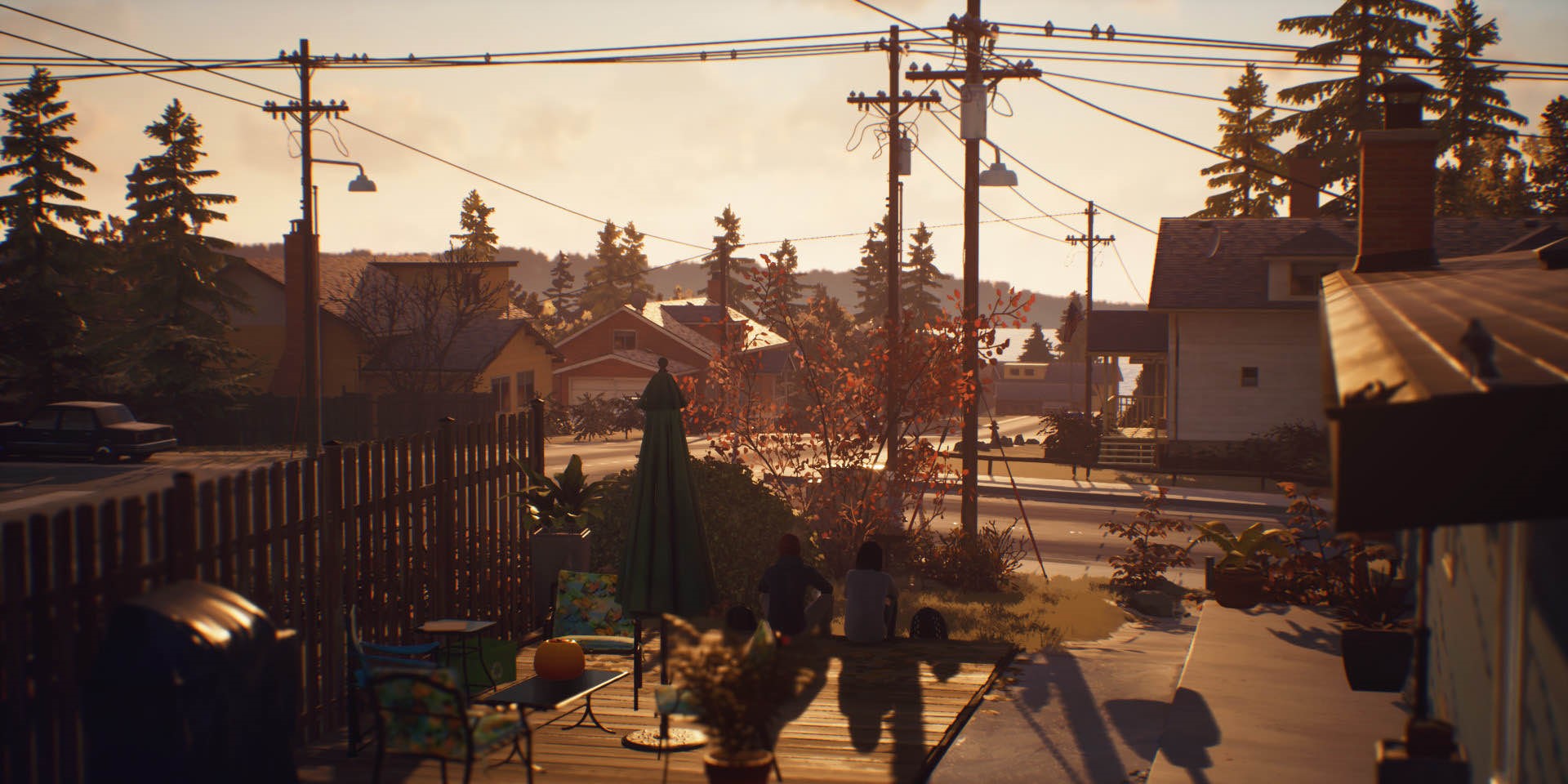
The Resort That Killed Itself
Before Life is Strange, before video games, and before my family (Or most settlers, for that matter) lived in the region, West Coast developers were having something of an identity crisis. Everybody wanted to be like the East Coast, although removed by 3,000 miles of mountain and forest. It's the reason why so many of our towns have East Coast names.
One expression of this desire was the founding of Bayocean, a truly uninspired name for an uninspired goal: To make some money. The plan? To create the Atlantic City of the West. The foundations? On the famously rugged Oregon coast, far different from the humid, flat beaches of the East. Great idea, right?
Immediately it appeared a fraught project. Things kicked off in 1906, and for its first decade, Bayocean was battered by waves which posed difficulties for development. Keep in mind, the town was only accessible by boat. The visionaries of Bayocean, the Potter family, had their work cut out for them. So, to aid development, the landscape of the spit was heavily altered.
By the 1920s, developers had managed to build a jetty to control the waters, pave a road leading off the peninsula, and construct a town to host thousands of people. Key parts of Bayocean included its heated wave pool, its dance hall, and its many hotels. For all these developments, the optimistic town of Bayocean would pay the price.
It didn’t take long for side effects of the jetty to surface. Diverted currents accelerated erosion on the beach, quickly washing the sand out from under Bayocean. I must imagine that living in the town was dreadful, seeing everything you knew wash away... In hindsight, it seemed like a slow, decade-spanning decline, but on the scale of oceans it happened in a blink: Those heavy winter storms which batter our coastlines were strengthened by encroaching water, and practically engulfed the town. These storms came every few years… 1932… 1939… 1942… 1948… Eating away at Bayocean’s economy… Its infrastructure… Its homes…
But it was the 1952 storm which put the final nail in the coffin-- The wrath of nature, provoked by human interference, overpowered the peninsula itself and turned it into an island. It was a floating (Or sinking?) ghost town. The last building washed away to the power of frequent storms in 1971, and the project was history.
The Coast is Strange
Don’t let this story color your perception of the region negatively, though! Most of Oregon is free from that rampant development which cursed Bayocean. Escape the confines of the Willamette Valley and you’ll find 200 wild state parks of every kind, from beaches to rainforests, from lakes to mountains, from deserts to wetlands, and I could go on... I’ve often thought you could spend an entire lifetime exploring the Pacific Northwest (Hell, just Oregon) and not get bored. I haven't.
No matter how long I’m away from home, the waves are always lapping at my doorstep when I return. Where better to set your small-town coming-of-age story?
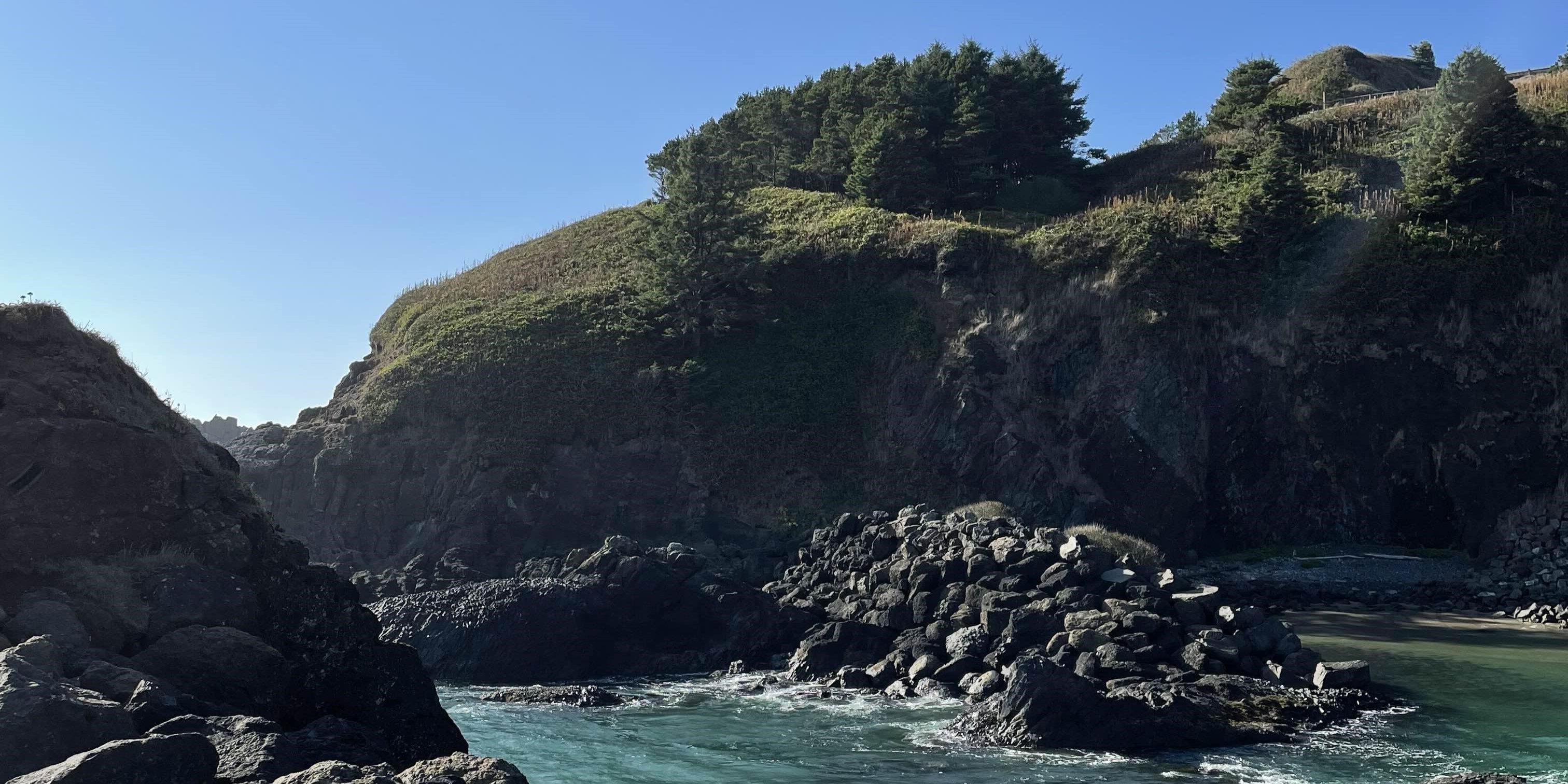
In Life is Strange, Arcadia Bay is so central that one might call it its own character. You come to know the strange little town well. It's a place your character is returning to after a long absence, and changes are both manifold and scarce in her eyes. The close-knit setting is intimate, giving decisions more impact. Life is Strange’s location offers a geographic and thematic harmony, perfectly illustrating its themes of change, choice, and consequence.
As much as the Northwest Coast has changed in the past, it's those future changes that the game is concerned with. Climate change is written all over the story. The humbleness of its coast mirrors that of the real counterpoint, including its vulnerability to climate change. In fact, the game reads like one big analogy for the anthropocene, and how choices made for good can compound to terrible outcomes.
The storm is coming, and if the Northwest Coast can weather it is still uncertain. Will the fate of Arcadia Bay’s inspirations be anything like the fictional town’s?
If the town is its own character, it's the residents who color its traits. Life is Strange’s strong focus on these residents plant it squarely in the story/narrative genre. In the course of the game, you explore a little microcosm of society, encountering all the high school drama you could ever wish for. X is sleeping with Y, Y got pregnant, X and Z are feuding, and so on. I have to feel bad for poor Max, the protagonist. Isn’t it terrible returning to your hometown and finding the same tired drama there? I know people back home who never overcame high school grudges, even years later. The coast never changes.
At the same time, the web of characters and their interconnections make the town feel highly lived-in. There’s familiarity between everyone, and these ties reveal the close attention paid to the human geography of Arcadia Bay. Chloe and Trevor are bros? No way! Rachel and Nathan had a thing? How interesting! While some of the cast, especially the older characters, feel as if they’ve been the same way for practical eternity, folks like Chloe are constantly evolving. It's been a long five years since Max was home last, and the people she left back then are no longer the same-- Dead, or metamorphosed. The coast has changed.
It's striking how thoughtfully Life is Strange’s coast mirrors my time with the real one. Nearly every driveway hosts a rusted car in prolonged decay. The diner sells the same crab cakes they’ve peddled for ages, scored by music from a decades-old jukebox. By the water is a port where gruff fishermen and highschool dropouts toil away. Just out of town are trailer parks… Junkyards… Water towers... Downtown, there are buses which never run on-time. Between old wooden houses there are playgrounds, chiefly used by teenagers to get high. Try and count the syringes on the ground and you’ll grow old before you finish. The coast never changes.
Contrasting familiar scenes are strange, unexplained occurrences. Snow is falling mid-October (And coastal snow is scarce). The bay is drying up, the livelihoods of fishermen at risk. New properties are being built and new developers are threatening to come to town. Unseasonal storms inundate low-elevation zones. Whales are beaching, birds are falling out of the sky, ants are spiralling, and it's hard not to suspect that someone poisoned the well. People are on edge… The informed ones, at least. The coast has changed.
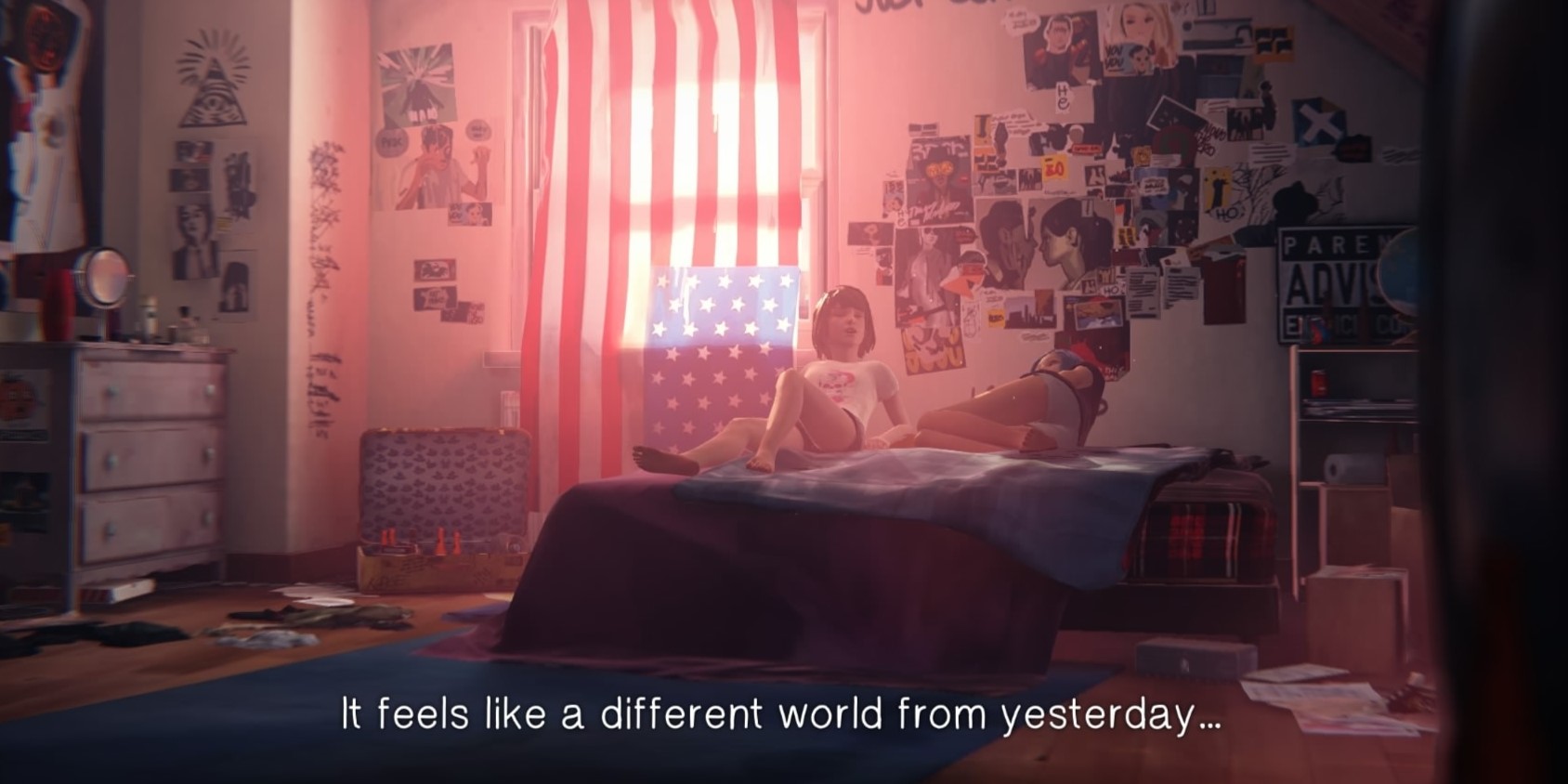
This is an anxious, beach life-in-death, paradoxical coast. It puts Arcadia Bay on the map in a way which merely surrounding it with pine trees couldn’t.
Representation of this region I love is slim, and Life is Strange does it beautifully. Sure, I’m biased due to my fondness for Oregon’s coast (How cool is it to see your home represented in a video game?). But, believe it or not, the inspiration of Arcadia Bay is more refined than just the coast… No, we can move the magnifying glass in on the exact town of 800 it’s modeled from: Garibaldi.
Ghost Towns
Garibaldi is well known in the game’s community as the inspiration for Arcadia Bay. But how? In-game ZIP codes and postcards narrow Oregon’s coast region down to Tillamook County, which has one real bay: Tillamook Bay. Coordinates found throughout ep. 4 also confirm the bay as the location of Arcadia’s real-life counterpart. Of the couple of towns in the bay, Garibaldi clearly bears the most resemblance.
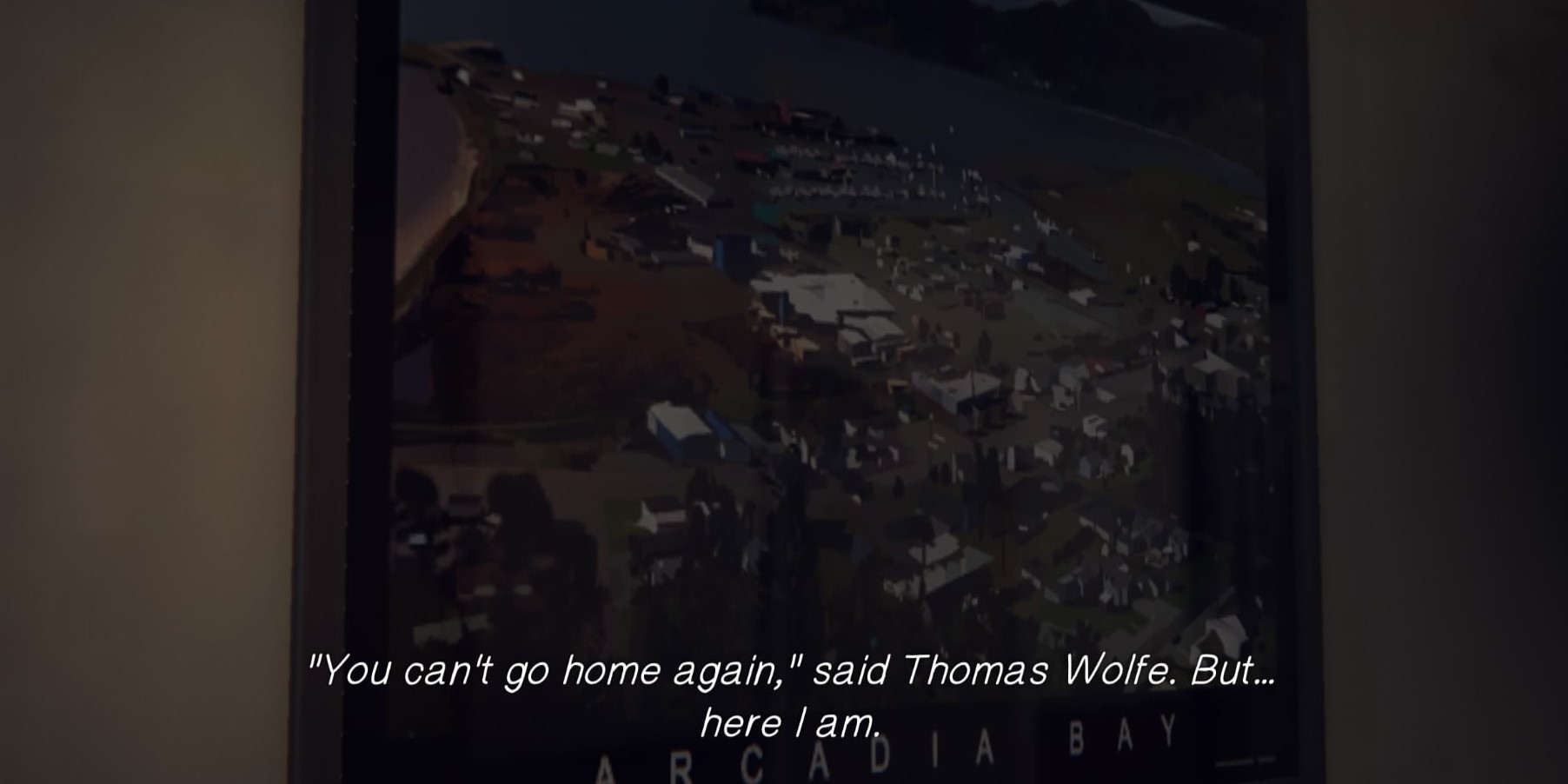
Upon learning this, my foremost question was: Why? I had visited Garibaldi before playing the game, but hardly remembered it. To me, the town was only a brief drive-through on the way to Newport.
But how grateful I am that this game helped me admire its small town beauty, albeit through a fictional lens. Garibaldi deserves a second look, because it really is a strange place. Allow me to take you there…
Oregon doesn’t have any luxurious, capital W, West Coast cities like Seattle, SF, or LA, but it has probably a hundred little beach shacks masquerading as cities, full of old fishermen and washed up artists collecting glass day-by-day. There are beautiful, touristy coast towns, and their still-beautiful-but-less-touristy neighbors. Betwixt are ghosts, whether of old ships, submerged forests, or settlements like those of Bayocean, reduced to nothing.
Garibaldi feels frighteningly close to joining the ranks of ghosts. There are old, rusted train tracks, likely incapable of carrying moving trains this side of the century. Down by the playground is a memorial to local logging which scaled down near infinitely, at least when compared to its halcyon days of steam donkeys and misery whips. Most ships at port seem to be recreational vehicles, the fishing economy less than half what it used to be.
Yet when it comes to the Pacific Northwest’s coastal charm, there’s no example as shining as Garibaldi. It's funky, to put it simply-- Whether in terms of style or smell is up for debate. The weird combined playground-memorial is indicative of just how condensed it all is-- There’s also a combined boat and car wash-- And who could forget the iconic public library and city hall and fire department building?
The built environment has even more strangeness to offer though: Two ominous watchers over the town. One is the towering smoke stack standing erect in a field like a less dignified Dublin Spire. The other is the giant, unsubtle “G” tattooed into the hillside. Ominous.
From between the forests and cliffsides, you could swear Tillamook Bay was its own isolated world. Unlike Arcadia Bay, the beach isn’t directly on the ocean. Instead, it's protected by a peninsula off-shore. If Arcadia Bay existed on this peninsula seaside, it would’ve suffered a fate not unlike Bayocean’s-- Lashed by wave after wave into nothingness. On second thought, maybe the fateful storm wasn’t so unprecedented after all…
Arcadia Bay’s representations aren’t limited to just Garibaldi. The emblematic lighthouse watching over the game’s bay bears a close resemblance to Cape Mears, or maybe Heceta Head. Other coastal towns like Newport and Tillamook itself can also be seen in Arcadia Bay. Regrettably, the game’s developers nearly took inspiration from nearby Astoria, my hometown, but they backed down due to its size. Here’s hoping for Life is Strange three! Or four, or whatever number they’re on by now.

What Life is Strange represents almost perfectly, more so than the geography of the small-town Oregon coast, is its atmosphere.
Just like in Garibaldi, there’s the ever-present squabble of birds, sometimes forming in great murmurations overhead. If it could project scent, I’m positive Life is Strange would be drenched in tones of salt, dirt, and fish. The score evokes the early 2010s indie scene which may be too twee for some, but is nostalgic for people my age.
In Arcadia Bay’s sentimental sounds and soft light, I can’t help but think of my own time as a teenager. The feeling is doubled, if not tripled, by the reminiscent atmosphere of the coast. My mind races back to the various little port towns, from swampy Nehalem and sandy Waldport all the way up to Ilwaco, Washington, which I grew up around. I also can’t help but see Bayocean written all over Arcadia Bay.
The town of Ilwaco is a stone’s throw from Astoria, and as such, I visit there most times I’m home. Like usual, it never seems to change. But, last winter, I came home to find something different: The town’s docks were engulfed in flame. You could see the plumes of smoke from across the state line. By some luck no one was hurt, but it was nonetheless a huge hit to the town’s already ghostly crabbing economy. I guess some things do change after all.
It may be fire, or flooding, or erosion, or storms, but ghost towns never get to be abandoned of their own accord. Just like with Bayocean, and in Arcadia Bay, change comes scarcely, then compounds until it's unavoidable. First the pH balance may be off, and before you know it all the fish are dead. A lethal fire can start from a single spark. Development can lead to catastrophic coastal erosion. Do you see the connection yet?
And if that doesn’t feel concrete enough, consider this:
Garibaldi is less than a mile from the ruins of Bayocean. It once occupied the ocean-facing peninsula I mentioned which protects Tillamook Bay. A grim geography.
Coast Towns
While I wouldn’t have you thinking that Oregon’s coastal towns are just waiting around to die, the difficulties they face are unignorable. Look no further than close-by Tillamook. Tillamook Bay serves as the gateway of five converging rivers to the ocean, making it a key chokepoint for discharge. Tillamook only has elevations ranging from water level up to 30 feet above it. Especially with our region’s rainy winters, the town is at serious risk of flood. This is especially true for those rural zones around the city, which trend towards lower socioeconomic class-- Trailer parks and farming steads.
As chance would have it, another vulnerable part of Oregon flooded in the course of writing this. Nehalem, a tiny town on the Nehalem Bay, was saturated due to exceptionally high tides. It was referred to as a king tide, a situation in which water levels can rise 6+ inches above their maximum. It wasn’t attributed to climate change, but still illustrates where coastal vulnerabilities lie. Marshy towns like Nehalem are so used to flooding that their people have learned resiliency, but there’s no telling how far sea level rise will push tides above what’s today considered normal.
There’s a clear pattern here of flood risk in Oregon’s coastal water bodies. There are dozens more examples I could cite, but future events are the focus of the game, so lets stay on track. Tools from the NOAA and DOGAMI (A sick name for a state agency) can predict where flooding will occur and the extent of its damage. Other mapped spots of flood vulnerability include: Pacific City on Nestucca Bay, Neskowin and Rockaway Beach, both of which are right on the ocean.
These towns, smaller than some city neighborhoods, could face great losses with sea level rise and increasingly severe floods.
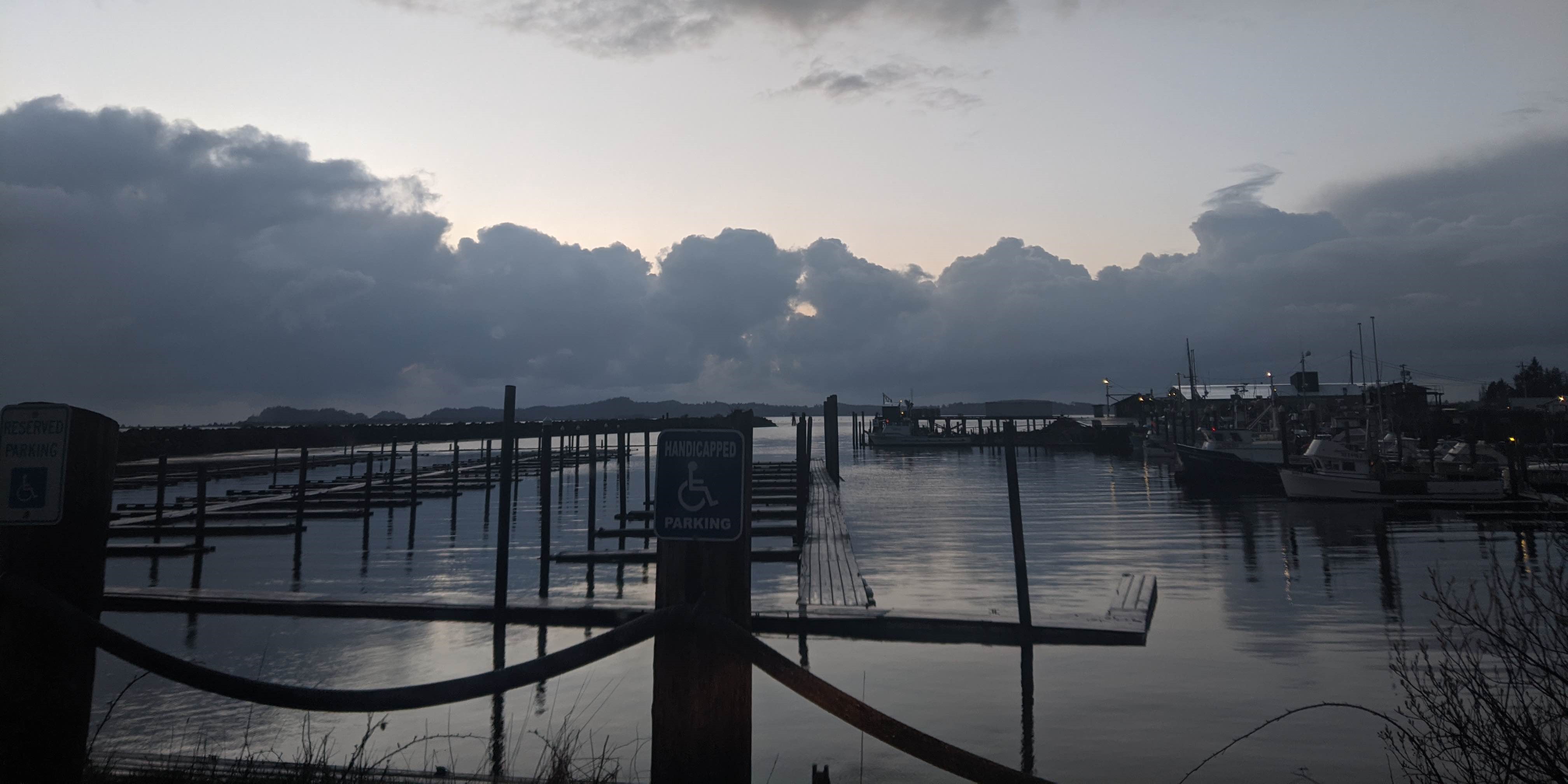
Vulnerabilities come in other forms as well. Consider the economic aspect-- Without monetary resources for travel, repair, and resilience, climate change will take a devastating toll on poorer people. While Oregon’s small towns aren’t all necessarily poor, their lack of resources is apparent. Port Orford, Toledo, and parts of Coos Bay which are lower income than the rest of the coast can expect worse damages from climate hazards due to their lesser resources.
I've spent time in Coos Bay, as well as Newport (Near Toledo). It’d be difficult for me to brand any of those places as “in danger.” Businesses still operate. People go about their lives. While not exactly boom-towns, their economies stay above water. But, most importantly, there’s already a sense of resilience in their people…
Coast dwellers are hardy. The smaller the town, the greater (ideally) the sense of community. People will pull through. People will band together. If there’s anything that offers hope about our tumultuous future, its people. With that being said, it's also people who got us into this mess. The Anthropocene is nothing without the “anthro.”
Change is Forever
In our brief time on this planet, humanity has made some major renovations. Here’s how I see this era reflected in Life is Strange:
Similarly to the 200 years since the Industrial Revolution, Max’s destructive time with her rewind power was very short (Less than a week). At first, it was considered a blessing which could change the world. Max takes pride in her good deeds, including saving lives and solving crimes. I think it's also fair to say the Industrial Revolutions accomplished some good things. Or, at least, inventions stemming from it did...
On the other hand, it's debatable if the Industrial Revolution had good intentions. Can you apply intentions, or even emotions to a technological movement? The key figures of the revolution, its entrepreneurs, were profit-focused. And while the movement got vulnerable workers out of danger, I’d guess the incentive was money, not safety. What’s certain is that it allowed more people to get more products-- Faster, safer, and cheaper. If it weren’t for its long-term consequences, I think this period would be better regarded in hindsight.
Max’s motivations are also somewhat debatable, based on how the player makes decisions. Is she altruistic, helping others whenever possible, or is she selfish, only changing the past for her own sake? Does she leave the disability fund money, or steal it? Does she put her community first, or her relationship?
No matter how you read Max’s character, her week leading to the storm is a whirlwind of change. Her choices compound, and little changes lead to big ones. The power granted to her, at first used sparingly, soon grows out of hand. Time control begets more time control.
In a way, it's Max’s own personal “revolution.”
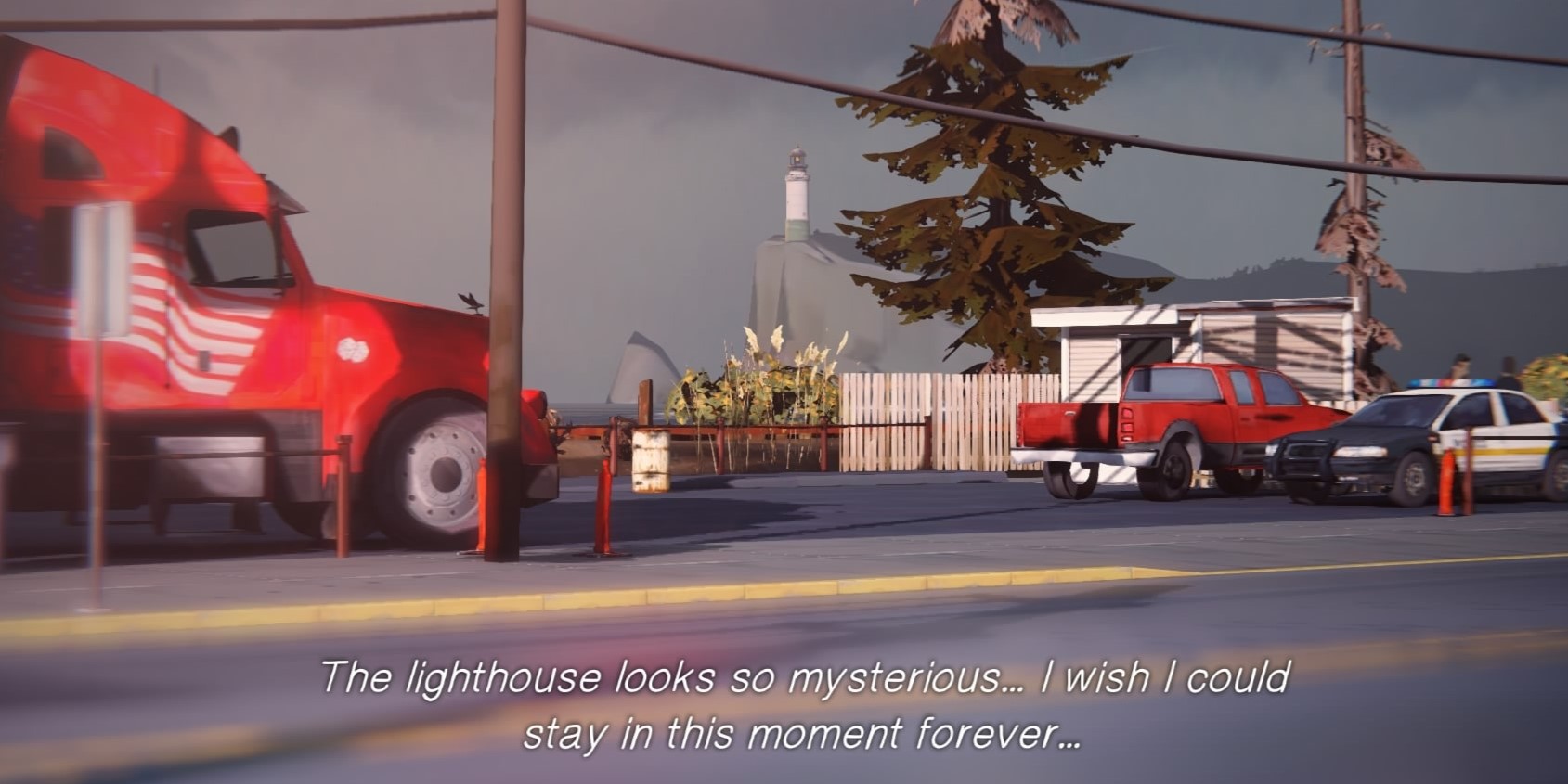
Outside of thematic analysis, climate change is addressed multiple times in Arcadia Bay. It's seen in flyers, posters, and on the news. Its effects are also reflected by what's attributed to Max’s time-meddling: Unseasonal weather, birds dropping dead, the fishing economy drying up, and whales beaching.
With imagery like this, it should be clear how climate change has inspired the game. Narrative, themes, and imagery combine to encapsulate the anthropocene: Life is Strange predicts that compounding changes will destroy the world.
It's hard to disagree with this idea. Things are changing on the coast, and it’ll lead to more and more problems as consequences amass. For instance, consider sea level rise in Washington. Since 1950, levels have risen by as much as four inches. This may not sound like much, but it can be huge for coastal communities, not to mention how the rising quickens exponentially. Today, water levels rise roughly an inch every five years, thanks to rising temperatures, melting ice, and intensified weather. Ocean acidification has also been recorded in the Northwest, which leeches into bays and beaches to affect critical shellfish species.
Ecosystems exist in a delicate balance, and human interference is pushing the scale. Species are going extinct at a rate of 1,000+ annually (With some estimates as high as 30,000). It's not uncommon to see beached mammals on the Oregon coast, like the sperm whale at Fort Stevens last year.
And without overshadowing the inherent sadness in all this, it's also worth mentioning the potential suffering of humans dependent on these ecosystems. Bountiful fishing economies in my neck of the Northwest are old memories at this point. More and more towns have pivoted to tourism as a main revenue source, which only brings more people… More development… More problems…
The coast is changing.
There’s one key similarity between Life is Strange and climate change which I have yet to mention: The ratio between those responsible for change and those affected by it is huge. In the real world, a handful of corporations have been identified which push the majority of greenhouse gas emissions. And who has to suffer but the rest of the world? Max is the one responsible for the storm which destroys Arcadia Bay, whether or not she knew the outcome of her choices. But from Max’s first decision to use her miraculous power, it sent her down a path of compounding consequences. For using that power for herself, she’s the only one to blame.
It's not necessarily good news, but the fact that just 57 companies have emitted 80% of all GHGs in the past 8 years hopefully relieves some guilt. I know that it has for me (Although I’ll never stop recycling! You can’t make me!). There are many things to be done on the Northwest coast to protect it from future changes. A scant few can be done by any one person.
Life is Strange evokes some real emotions in me as it nears its end. Playing as Max, you can’t help but feel responsible for the terrible things coming to the coast. But, in real life, it shouldn’t feel that way. While many have asked how to change the world as an individual, Life is Strange begs the converse: How can an individual save the world from change?
That’s something which each member of our generation has to grapple with-- You and I included. For the Oregon coast, or its forests, or wherever it is that you call home. Don’t let it become a ghost town.
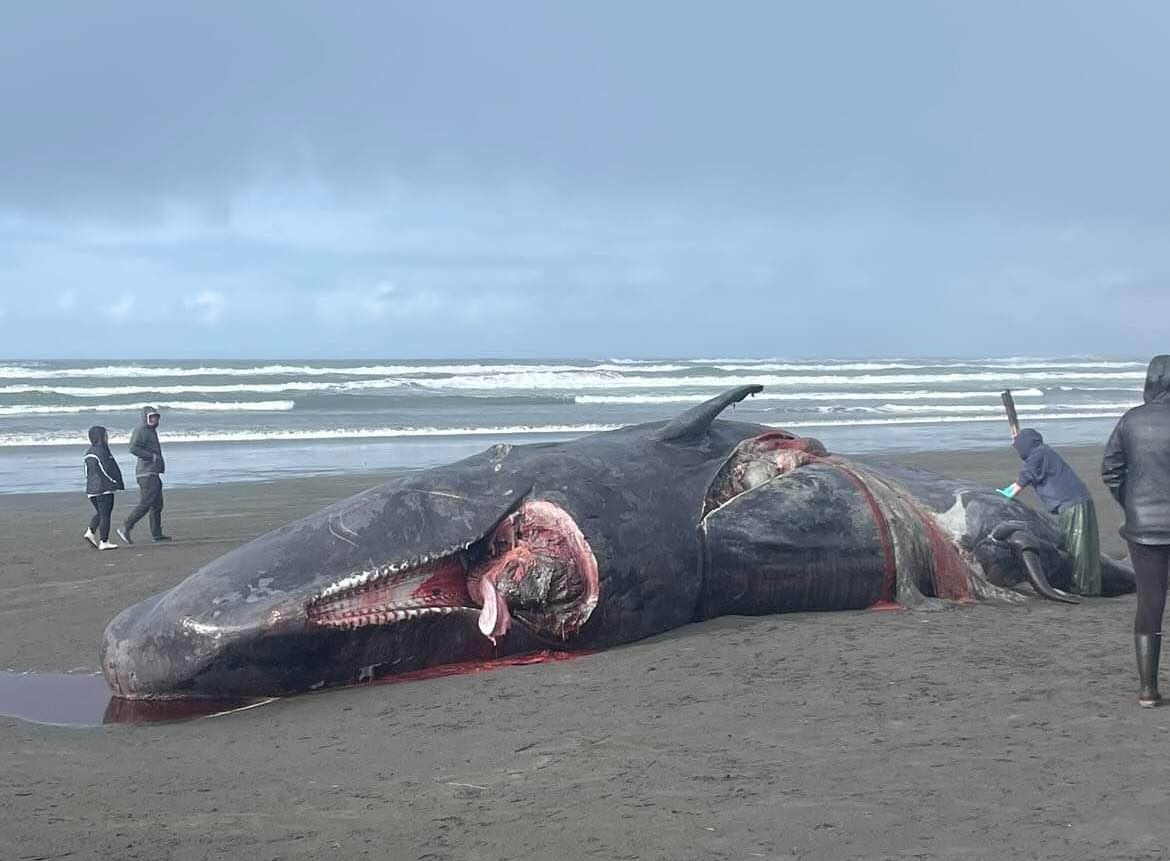
References
Bayocean: The lost resort town that Oregon forgot- OPB practically raised me and I’m happy to be able to reference them here. This is a great story about Bayocean and its demise, using oral histories from primary sources.
Flood-prone communities in Oregon have low trust in agencies responsible for helping them, survey shows- Portland State article, focused specifically on coastal flooding and how much still needs to be done. Residents of flood-prone places I mentioned like Tillamook have the need for flood prevention, but have some resistance to it.
Just 57 companies linked to 80% of greenhouse gas emissions since 2016- This article describes research finding that the majority of carbon emissions come from just a few entities. If you’re a believer in “name and shame” you should take a look at this and the linked data. There are also resources on which industries and fuels emit the most (Hint hint: Coal).
Washington’s Sea Level Is Rising- Site with quick stats on sea level rise measured in Washington, including how the rising is accelerating. It also has a tool that forecasts sea level rise in a Washington area of your choosing.
Ocean Acidification in Pacific Northwest Fisheries and Aquaculture- Factsheet on ocean acidification published by the Dartmouth Flood Observatory and the NOAA. It has some stats on how acidification affects PNW fisheries with further links to more info on ocean acidification.
Sea Level Rise and Coastal Flooding Impacts- Great tool from the NOAA which can be used to explore flooding hazards on the coast and elsewhere. If you’re curious about your town, punch in the ZIP and check out how different flood scenarios might affect it.
Ghost Town- Thanks for reading the references. Here’s a fun song as a treat.
